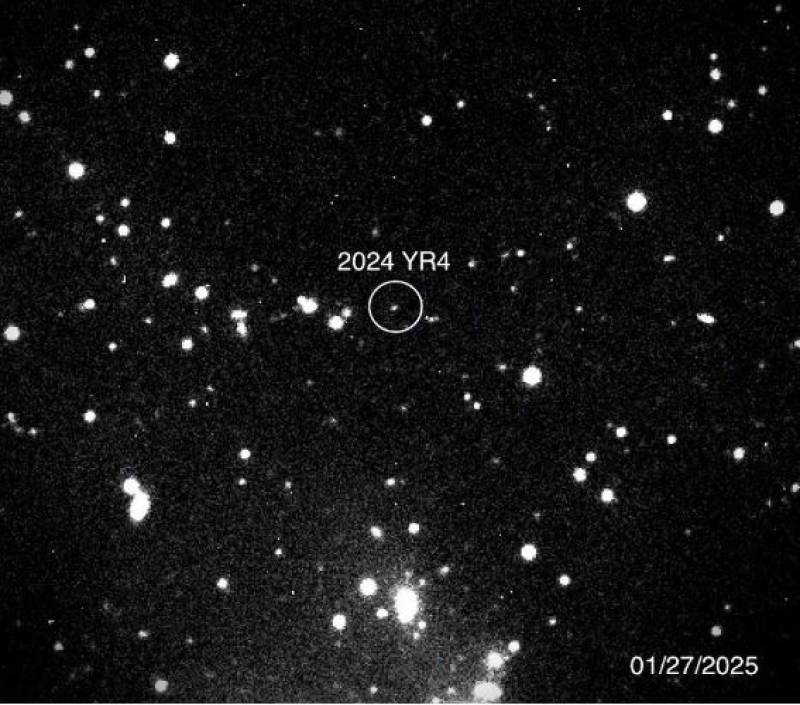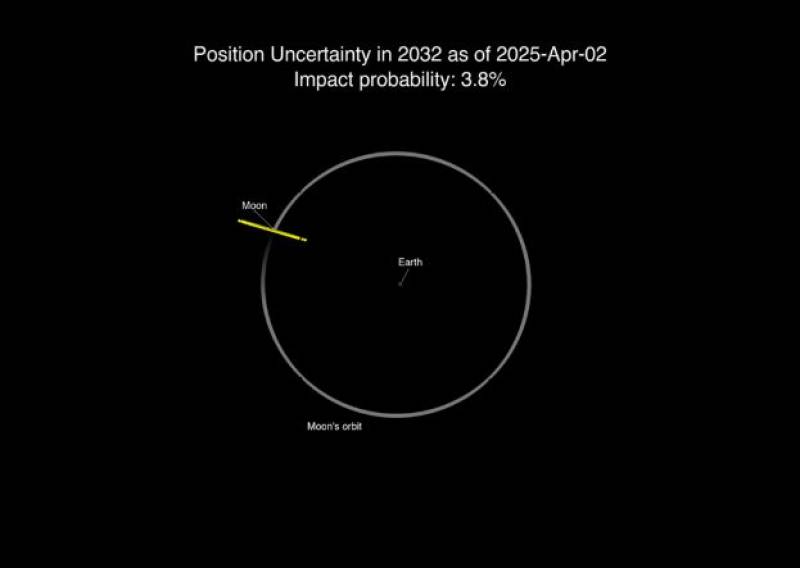Date Published: 12/06/2025
Asteroid 2024 YR4 now on collision course with the Moon
NASA has increased lunar impact probability to 4.3% for 2032, but Earth should be safe
Space agencies worldwide are keeping a watchful eye on
Asteroid 2024 YR4 as new calculations show an increasing likelihood of lunar impact.
NASA's latest orbital analysis reveals the probability of this 60-67 metre space rock striking the Moon on December 22, 2032, has risen to 4.3% – a figure that commands serious attention in the astronomical community.
While Earth faces no danger from this celestial visitor, the potential lunar collision has sparked intense scientific interest and continued monitoring efforts.
The asteroid's substantial size – about as big as a city block - meant any Earth impact would create a significant crater and potentially cause widespread damage. However, months of intensive observation gradually painted a different picture.
Coordinated efforts between observatories in Hawaii and Chile, combined with crucial data from the James Webb Space Telescope, allowed NASA to dramatically revise its projections.
But during a brief observation window last month, the James Webb picked up a few new crucial and unsettling details about the asteroid: while Earth was becoming safer from impact, the Moon moved into its crosshairs.
These new calculations pushed the lunar impact probability from 3.8% to the current 4.3%, bringing 2024 YR4 back into the scientific spotlight for entirely new reasons.
What happens if the Moon gets hit?
Despite the elevated collision risk, space experts emphasise there's no reason for public concern. A lunar impact, while dramatic, would not threaten Earth or disrupt the delicate gravitational balance of our planet-Moon system.
NASA has confirmed that even a direct hit would not alter the Moon's orbit or affect Earth's tides and climate patterns. Any debris ejected from the impact site would either remain within the Moon's gravitational influence or, if somehow propelled toward Earth, would burn up harmlessly in our atmosphere, creating nothing more spectacular than brief meteor streaks.
Rather than a crisis, astronomers view the potential impact as an unprecedented research opportunity. A collision would provide invaluable data about asteroid composition, lunar geology and impact dynamics on an airless world.
The next critical phase in tracking 2024 YR4 comes in 2028, when the asteroid makes another close approach to Earth's neighborhood. This encounter will provide astronomers with their best opportunity to gather additional data using both ground-based telescopes and space-based instruments, including the James Webb telescope.
Images: NASA
article_detail

|













